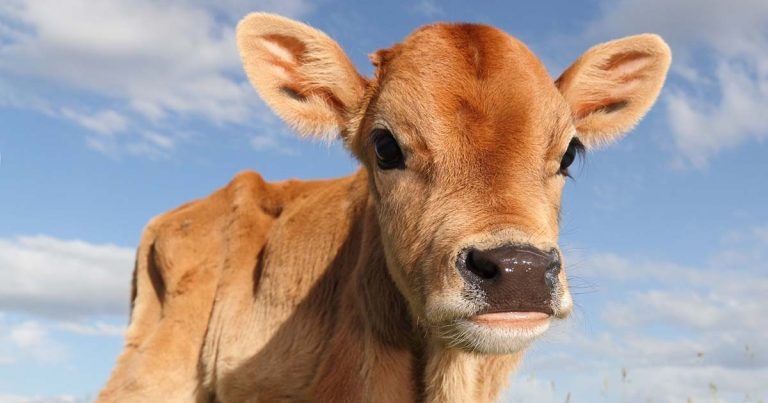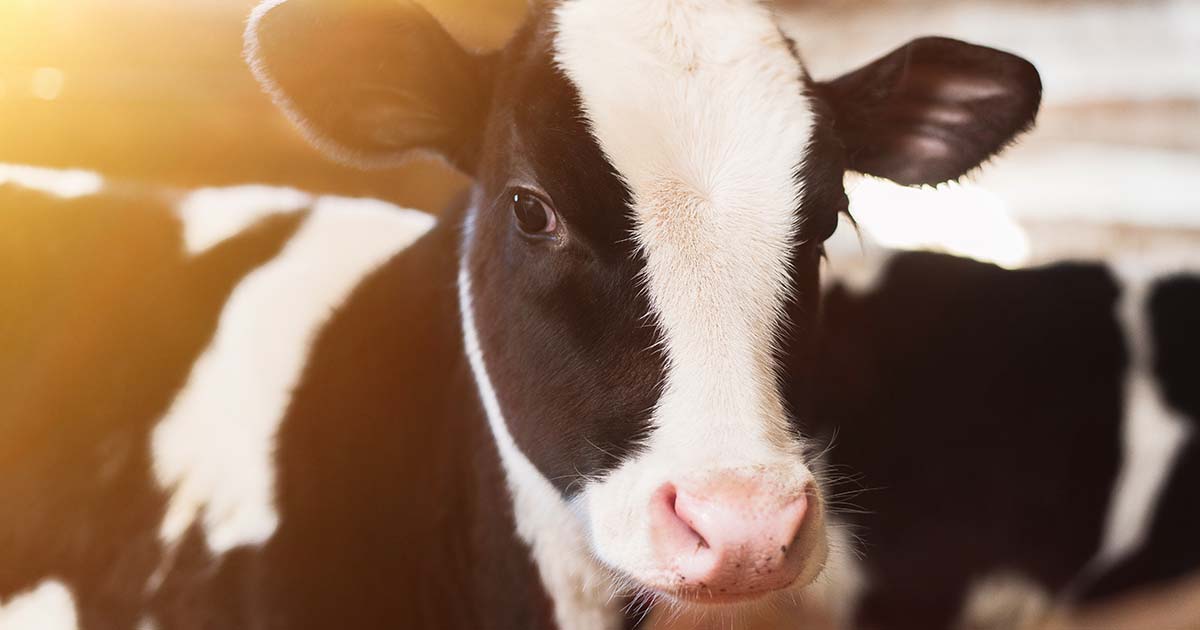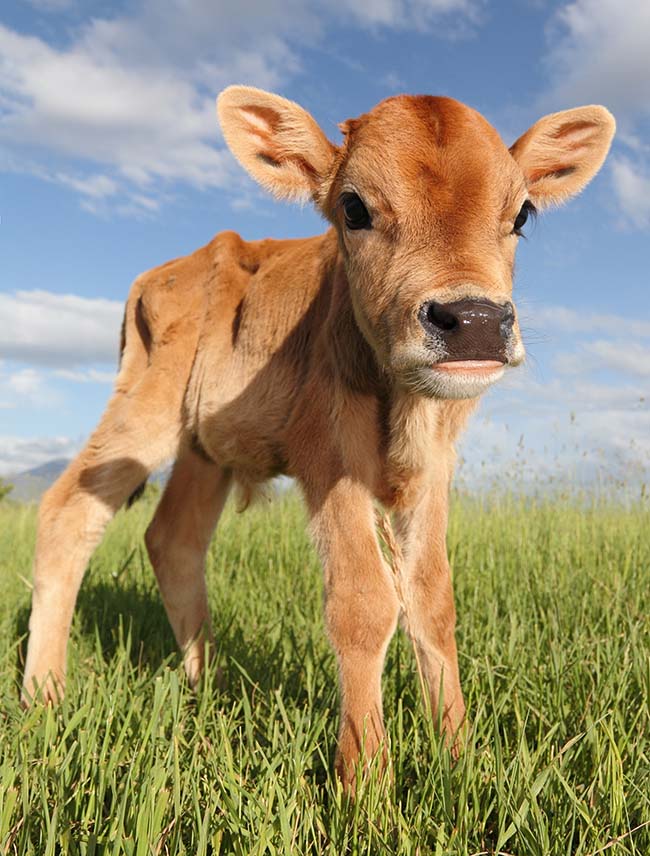11 Apr 2023
Calf health is a key area for vets to get involved in on farm, and requires consideration of factors including management procedures, the environment, specific diseases and calf immunity – with a great emphasis placed on prevention.

Image © etonastenka / Adobe Stock
Calves represent the future of cattle herds, and studies have demonstrated the long-term effects of management in the early stages of a calf’s life on the health, welfare and profitability of ruminant businesses (Boulton et al, 2015).
Significant opportunities remain for veterinary surgeons to engage with their clients on the topic of calf health. In their 2018 survey of farmers, Baxter-Smith and Simpson (2020) identified that, while on average, farmers rated their calf-rearing practices at 7.7 out of 10, a significant proportion of respondents from all system types still felt that youngstock did not get enough attention (dairy 45%; beef 34%; calf rearers 30%).
This, alongside the sell-out success of industry events such as the National Youngstock Conference, illustrates the desire for improvement and further highlights the opportunity where vets can respond to deliver value to their clients.
The recently launched Animal Health and Welfare Pathway (2022) offers further opportunities for vets to engage with their clients around youngstock. The Annual Health and Welfare Review offers a potential opportunity for vets to review calf health with their clients and identify targeted areas for improvement.
Following on from the review, the Animal Health and Welfare Capital Grants Scheme will provide funding to help address key health and welfare priorities. Funding includes smaller grants, where farmers can select from a list of equipment and technology items (such as weighing systems, automatic calf feeders with washing facility, calf milk pasteurisers and dispensers, as well as smaller items, such as calf coats and hanging balls for enrichment).
Larger grants, for bespoke infrastructure projects such as new housing and building upgrades, are also going to be available, with calf housing having been identified as a key priority.

Colostrum management is one of the most critical areas of calf care, with calves relying on the early consumption of colostrum to acquire the immunoglobulins they require.
Colostrum quality depends on several factors, including the volume produced, the time of collection, the concentration of immunoglobulins and bacteria levels (McGuirk and Collins, 2004). For successful passive transfer of immunoglobulins, the calf must ingest sufficient good quality colostrum as soon as possible after birth.
Failure of passive transfer (FPT) is defined as a serum IgG concentration below 10mg/mL, and has been found to be associated with increased preweaning morbidity and mortality, increased duration of illness, reduced growth rates and poorer long-term performance (for example, reduced first lactation yield and increased culling rates).
Although the importance of passive transfer has been studied extensively, farms continue to struggle with FPT, and its associated economic and welfare costs. Worldwide prevalence estimates range from 14.2% in Scottish dairy bred calves (Haggarty, 2022) to as high as 41.9% in Australia (Abuelo et al, 2019).
In the UK, the annual “#COLOSTRUMISGOLD” campaign demonstrates the industry’s desire to address the challenges of FPT and offers one opportunity for veterinary practices to engage with their clients on this important topic.
Use of serum total protein monitoring offers a simple way of monitoring colostrum feeding practices on farm, and can be a key component of calf-health monitoring programmes or disease investigations.
The system proposed by Lombard et al (2020) gives clear categorisation of passive immune transfer and provides clear cut-offs for interpreting farm level monitoring results.
Neonatal calf diarrhoea caused by infectious agents remains one of the biggest health issues in youngstock health, accounting for around 50% of all calf deaths.
While the immediate management of affected calves will often be symptomatic and focused on addressing dehydration, identifying the underlying pathogen enables a targeted approach for the prevention of future disease – be that through the implementation of vaccination programmes or improvement of biosecurity, and cleansing and disinfection protocols.
Treatment of diarrhoea in calves should have four goals: correction of dehydration and electrolyte abnormalities; correction of acid-base abnormalities; provision of nutrition; and the treatment of the underlying infection.
Fluid therapy should be oral whenever possible, but IV fluids may be necessary for very sick calves. IV fluid therapy is indicated in cases of severe dehydration (greater than 8% dehydration), or in situations where the calf is exhibiting signs of CNS depression, weakness, inability to stand and an absent suckle reflex.
In practice, the rapid use of IV fluids can be an extremely useful tool in the treatment of calf diarrhoea, and they can be used to restore an animal to a state where it can take oral fluids.
Oral rehydration solutions are widely commercially available, but common challenges remain around its effective use on farm. It is not uncommon for producers to underestimate the amount of fluids a diarrhoeic calf requires; for example, as single 2L feed of electrolytes is not going to be sufficient to address the fluid deficit and ongoing losses in a calf that is 5% dehydrated.
Suggestions have been made that continued milk feeding worsens diarrhoea and treatment protocols should involve a period of “resting the gut”, during which milk is withheld. Research has shown that milk feeding does not worsen or prolong diarrhoea, nor does it slow down healing of the intestine and withholding milk for greater than 12 hours can result in cachexia.
Vets should ensure their clients are properly trained to identify when oral electrolytes are indicated and provide clear protocols on how to provide sufficient fluids to address the identified deficiencies.
The use of antimicrobials in the treatment of calf diarrhoea is controversial, with concerns that the use of antimicrobials in the treatment of calf diarrhoea promotes antimicrobial resistance in both pathogenic and commensal bacteria.
It is essential that antimicrobials are used in a responsible and targeted manner, and not as a “sticking plaster” for poor management. Although antimicrobials may be considered as therapy for an individual calf, antimicrobial prophylaxis or metaphylaxis of a group of calves for enteric disease is not recommended, and does not improve mortality. The Kingshay antimicrobial focus report (2023) highlighted the higher level of oral antibiotics usage on dairy farms considered to be high users of antibiotics, most likely for the management of calf disease, and points to further opportunities to improve systems and management on those units.
Anti-inflammatory drugs should be administered to systemically ill calves once fluid support has ensured appropriate renal output. NSAIDs decrease inflammation in the gastrointestinal tract and reduce the effects of the endotoxaemia and septicaemia. Treated calves also have improved starter ration intakes, a higher bodyweight gain and increased activity level (Todd et al, 2007).
Prevention of disease is always better than treatment. For calf diarrhoea, where the main route of transmission is via the faecal-oral route, the focus needs to be on ensuring a high standard of hygiene. The likelihood of pathogen transfer hinges on a number of different factors, including the pathogen load, survival rate on surfaces, resistance to disinfectants and the initial infecting dose. Irregular or inadequate cleaning is one of the most common problems in calf-rearing, and preventive health interventions are sufficient tools for disease prevention by avoiding the transmission of infectious agents (Barry et al, 2019).
When investigating calf health issues, it is important not to overlook the calving environment. Cows should calve in a clean environment separate from other animals, and calving pens should never be used as sick pens.
Ideally, calving pens should be completely cleaned and disinfected between cows. Calf housing should be regularly cleaned out and disinfected to prevent the build up of pathogens.
Producers should always use cleaners and disinfectants in accordance with manufacturers’ recommendations, paying special attention to required concentrations and contact times. Ideally, products used should be effective against all likely scour pathogens, including Cryptosporidium and coccidia.
It is important that all feeding practices adhere to a high standard of hygiene and vets can play a key role in assessing these practices; objective measures such as adenosine triphosphate (ATP) monitoring can provide a simple, yet effect, way of objectively monitoring feeding hygiene.
The importance of colostrum has been discussed previously. For some scour pathogens, the potential exists to vaccinate cows prior to calving, to increase the quantities of virus and bacteria-specific antibodies in the colostrum.
It is important to stress to clients the requirement for good colostrum feeding practices to ensure these programmes are effective.

A huge variation exists in calf feeding practices, and it is beyond the scope of this article to present a detailed review of different feeding systems and dietary components. The choice of liquid feed is usually driven by availability, economics and producer preferences.
When investigating calf health and performance issues, it will be essential to review the feeding practices, looking at aspects such as consistency and cleanliness, as well as the volumes, concentrations and components of any diet.
As a rough guide, calves should be fed 15% to 20% of their bodyweight in whole milk or a suitable milk replacer.
Milk feeding, while comparatively expensive, must be viewed as a long-term investment in the calf; failure to provide sufficient energy and volume of milk will have negative impacts on health, growth rates and, potentially, lifetime performance. It should also be remembered that it is a legal requirement that calves less than 28 days old must be fed at least two liquid milk feeds per day.
Rumen development is driven by the intake of hard starter feed, which results in starch fermentation, lowers rumen pH, and facilitates bacteria growth and production of butyrate. Butyrate stimulates the growth of rumen papillae, which increases the surface area of rumen, enabling greater absorption of nutrients.
Offering straw as roughage alongside concentrate builds the muscularity and capacity of the rumen.
With rumen development being driven by the consumption of hard feed, it is important to maximise intakes. This can be done by introducing the starter feed as soon as possible after birth, and always ensuring that the feed offered is palatable and accessible.
Water is often an overlooked aspect of calf-rearing, despite it playing in an essential role in hydrating the calf and also in rumen development. Ensuring ad-lib access to clean fresh water from birth is key to optimising growth rates; calves with an insufficient supply of water will limit their solid feed intake.
The actual daily water needs for calves depend on many factors including age, diet, environmental temperature and health status (scouring calves will drink more water).
Even within the first few days of life, calves will drink water if it is available. In the first week of life water, intakes can be up to 1L per day, rising to nearly 3L per day by three to four weeks of age.
When considering weaning, it is important that calves should be weaned based on concentrate intake, not on age, size or weight. Farmers should aim to wean calves when they are taking at least 1.5kg of concentrate for three consecutive days; weaning when intakes are below this level can lead to checks in growth rates, as well as stress and increased risk of disease.
Mee (2020) describes the challenges surrounding the potential for “farm-blindness”, with respect to poor calf management and performance. For this reason, a need exists for data and objective assessment parameters for the evaluation of calf health.
Vets should work with the clients to ensure accurate recording of disease incidence, with these records being regularly reviewed and intervention points being agreed.
Alongside capturing disease rates, monitoring programmes for failure of passive transfer and growth rates offer an opportunity for more proactive involvement, and can provide actionable insights.
Surveys of farmers (Baxter-Smith and Simpson, 2020) have identified 13% wanting to improve monitoring and achieving appropriate daily liveweight gains.The usefulness of benchmarking has been demonstrated in many fields, including health care and agriculture. The process of comparing one’s own performance with others provides context to reflect on current practices and identify areas for improvement (Anand and Kodali, 2008).
Studies have shown that producers who have access to data related to calf health from other farms are highly motivated to improve their own management practices; for example, by aiming at increasing average daily weight gains of their pre-weaned dairy calves or colostrum management (Atkinson et al, 2017; Sumner et al, 2020).
Calf health represents a key area for veterinary involvement on-farm. Optimal health and performance are dependent on a complex interaction between a number of factors, from management procedures and the environment, through specific diseases and calf immunity.
Only by addressing this in a holistic manner can true success be achieved.
An emphasis on prevention is critical, limiting the need for subsequent intervention – particularly with the management of diseases such as calf diarrhoea.